Brisbane, Australia
CNN
—
Marion Barter won plaudits for her warmth as an elementary school teacher, but in 1997 the 51-year-old mother-of-two became restless, quit her job, sold her house, and flew from Australia’s beach-lined Gold Coast to start a new life in Europe.
Her family never saw her again.
If Barter had vanished without a trace, Australian police may have taken her case more seriously, but when her daughter, Sally Leydon, reported her missing, she wasn’t added to the missing persons list, and later a police officer told her Barter wanted no contact with her family.
For Leydon, there were too many unanswered questions, and 25 years later she is still searching for answers. Did her mother leave of her own accord, and did she truly want to vanish?
For more than three years, journalists working with Leydon and a band of amateur sleuths have chased down clues, charting their progress in the podcast, “The Lady Vanishes,” with 14 million downloads, according to the podcast’s executive producer.
After the podcast aired, New South Wales police launched a formal review of the case which gathered enough evidence to warrant a deeper investigation and eventually an inquest that ended last month.
To date, nobody has been charged with wrongdoing related to her mysterious disappearance.
New South Wales State Coroner Teresa O’Sullivan had been due to hand down her findings on Wednesday into a case that had tested evidence unearthed by the podcast and its listeners and information gathered by police.
But on Monday, the hearing was postponed “following further investigations,” according to a court spokesperson who declined to elaborate.
During the inquest, multiple witnesses gave evidence into Barter’s disappearance, but proceedings were dominated by the questioning of one man, Ric Blum, who for the first time responded directly to the question: “Did you kill Marion?”
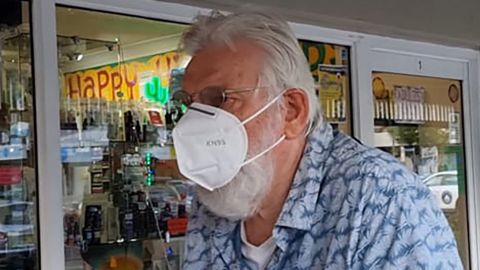
Blum, now 83, emphatically denies killing Barter or having any involvement in her disappearance in 1997, though he told the court he had an affair with her for four months before she disappeared.
During the inquest, Blum was asked several times about multiple “coincidences,” including that Barter had changed her name in the days before she left Australia to an alias that Blum had used in an ad looking for companionship – that Barter answered.
Other women told the inquest of their encounters with Blum, claiming that he had presented himself as a single, wealthy coin dealer who, in some cases, promised a “new life” abroad.
Instead, the court heard Blum was a married father-of-two living on a disability pension with his wife in a small coastal town in New South Wales with criminal convictions in France and Belgium for fraud, forgery, and confidence tricks. Blum acknowledged he had affairs but denied any wrongdoing.
“It’s not just my mom who has been affected by this now. We’ve exposed a way bigger fish than what I ever expected to find,” Leydon told CNN. “I believe there’s more (women) out there. And I really need to encourage people to come forward.”
Barter was last seen in Surfers Paradise, in the heart of the Gold Coast, on June 22, 1997, by her friend Lesley Loveday, who dropped her at a bus station, from where she’d travel to the airport to fly to the United Kingdom.
After three marriages and divorces, Barter was craving something new, and Leydon, the eldest of her two children, had encouraged her to go. “For me, as a 23-year-old at that point, I was like, ‘Well, if you’re not happy, just go on a holiday. It doesn’t matter, it’s not the end of the world. Plenty of people leave their jobs,’” she told CNN.
Leydon told the podcast and the inquest that her mother phoned her from a payphone in late July and said she was having a fabulous time in the quaint English town of Tunbridge Wells and looked forward to seeing more of the country.
That was the last time they spoke.
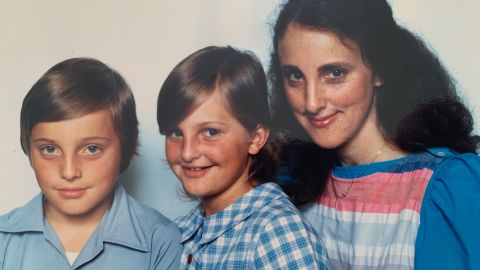
Leydon recounted what happened next during the inquest, recalling memories that have played on her mind for 25 years.
After that call, weeks passed with no contact, and after her mother failed to phone her brother for his birthday on October 18, Leydon said she called her mother’s bank in Australia.
Leydon said a bank worker, who acknowledged she should not reveal details to someone other than the account holder, told Leydon that something unusual appeared to have happened.
Every day for more than three weeks, someone had entered branches in Byron Bay and on the Gold Coast, where Barter used to live, and withdrawn 5,000 Australian dollars (about $3,370) at a time from her mother’s account, Leydon said, citing the bank worker. A separate transfer of 80,000 Australian dollars ($54,000) was made on October 15, the inquest would later hear.
Leydon rushed to Byron Bay with a photo of her mother, but no one could confirm that they had seen her.
On the same day, October 22, Leydon contacted police.
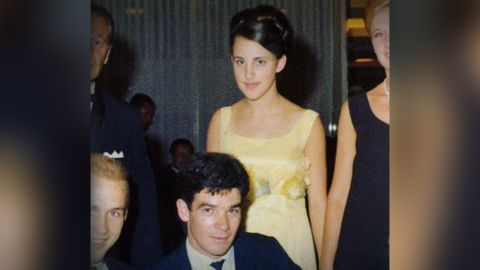
NSW Police recorded her concerns but didn’t add Barter’s name to the missing persons list, and when Queensland Senior Constable Paula McKenzie made inquiries with the bank, she said a bank teller told her Barter had withdrawn all her money and did not want her whereabouts disclosed.
“The teller was just so insistent that it was definitely her and there was no other way about it,” McKenzie told the inquest.
It would be 14 years before Leydon learned that her mother returned to Australia under a new identity. Privacy concerns thwarted Leydon’s previous attempts to extract information about her mother from multiple official sources, she said.
“The privacy issue is such a big deal,” Leydon said. “All those gates were tightly shut with a massive big padlock, and until such time as I get a death certificate for my mom, that padlock remains absolutely fastened.”
Detective Senior Constable Gary Sheehan told the inquest that he looked into the case and told Leydon in 2011 that her mother had changed her name and returned to Australia on August 2, 1997. He said he didn’t tell Leydon Barter’s new name or where the information came from because that was confidential.
Leydon later learned that her mother was now known as Florabella Natalia Marion Remakel, an unusual name she didn’t recognize – “I instantly knew at that point that somebody was involved, and somebody was telling her to do this because it’s just not in her personality to do it,” Leydon told CNN.
When Leydon obtained a copy of Remakel’s Australian immigration entry card, she immediately recognized the handwriting as her mother’s, leaving little doubt for Leydon that her mother had returned. Barter, now Remakel, had written on the card that she was a housewife living in Luxembourg who was coming to Australia for a temporary trip.
For police, Barter’s name change and secret return to Australia was further evidence the teacher had staged her own disappearance – and without having spoken with her or physically sighting her, they declared she was not missing.
When social worker Joni Condos, an avid listener of true crime podcasts, heard the name Remakel on “The Lady Vanishes” one night in 2019, she delved deep into online archives to try to find a link.
“I was sitting on the couch, it was midnight. And then I just thought, I’ll just give the newspapers a bit of a go. Because, you know, why not?” she said.
In an Australian online archive, Condos searched multiple variations of “Remakel” and found an advertisement in a French-Australian newspaper placed in 1994 by a 47-year-old man – “single, tall, dark, sober, non-smoker” – looking for a relationship with a view to marriage.
It was signed “F. Remakel,” with a post-box address and phone number in Lennox Head, northern NSW, less than two hours by car from where Barter lived.
The potential connection was too intriguing to ignore.
Condos and the podcast’s producers searched Australian records and could find no record of anyone named Remakel, but an online search of records in Europe showed one man of the same age and initial – Fernand Remakel – who was living in Luxembourg.
In 2019, when the podcast’s producers knocked on his door, Remakel denied any knowledge of Marion Barter.
Undeterred, the journalists and Condos dug a little deeper into the Luxembourg Business Register and found his ex-wife, Monique Cornelius. Separately, another listener linked the phone number in the ad to a coin business in the NSW town of Ballina run by Frederick De Hedervary.
The name Frederick De Hedervary would later lead police to his latest alias, Ric Blum.
Now an elderly man with a white beard and glasses, Blum shuffled into Ballina Court House with a walking frame, surrounded by television cameras to give evidence at the inquest.
The court heard that Blum had emigrated to Australia in 1976, and since then had changed his name at least 13 times, using his new identities to obtain drivers’ licences and passports.
When asked why, Blum said: “I just changed my name as a fantasy because it’s legal. I didn’t have any specific purpose.”
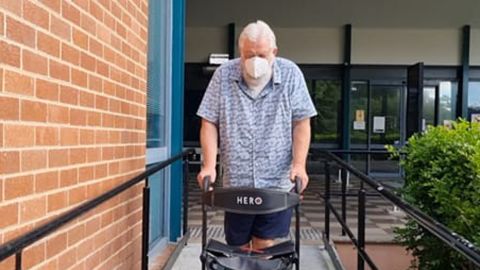
He admitted using Fernand Remakel’s name to take out a driver’s licence in Australia, and knew of the name through Remakel’s ex-wife, Cornelius, who he told the inquest was a “fantastic person.”
Blum said the relationship had only ever been platonic, and that Cornelius regularly visited the factory where he worked.
However, his tone changed when the senior counsel acting for the coroner, Adam Casselden SC, read aloud from a letter Blum had written to Cornelius in 1980, when he was living in Luxembourg with his young family.
In the letter, Blum said: “My enchantress I have never in my life made love like that with anyone before … Monday I leave for the UK and Ireland, a few days to buy our boat … I simply want to get to know this country which is as sweet as your smile, pretty as your eyes and warm like that love that I have for you. I am intimately persuaded that you will not regret your decision to leave with me and to start a new life.”
In a NSW Police statement read to the court, Cornelius said she’d had a sexual relationship with Blum that ended when she discovered he was married with children.
She called Blum a liar and “very big and dangerous manipulator.”
“For example, at the beginning of our relationship he told me that he worked for the British Embassy in Luxembourg as a special agent,” she said.
Blum admitted writing the letter but he said at the time he was infatuated with Cornelius, insisting that they’d never had a sexual relationship, as she claimed.
“She’s lying all along. She’s a liar. She’s lying, lying, lying,” he said.
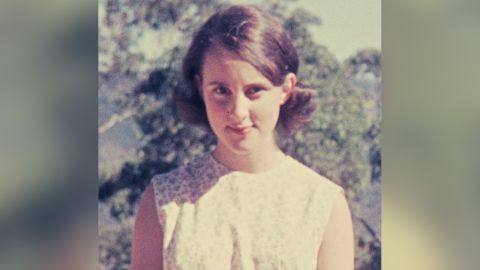
Questions turned to Barter, and Blum made an admission that had remained secret for almost 25 years.
He revealed that he’d had a four-month affair with the schoolteacher from February to June, 1997 – the same month she left Australia.
He had placed the ad under the name “Fernand Remakel” that Barter had answered, and they’d met three or four times at her home without his wife’s knowledge.
To journalist Alison Sandy, executive producer of “The Lady Vanishes,” the admission was a shock – until then there was no firm indication that Blum was in close contact with Barter in the months before she disappeared.
“It all fell into place. It all made sense. That was the missing piece of the puzzle we’d been looking for the whole time,” she said.
Blum told the court he ended the relationship with Barter before she left Australia because he was married with children and didn’t want “drama.”
The court heard Blum traveled to Europe on June 17, 1997, five days before Barter left for the UK, and he returned to Australia on July 31 – two days before Barter returned under the name Remakel.
When it was put to Blum that their overlapping travel dates seemed to be “quite a coincidence,” Blum said he and Barter didn’t talk about their respective travel plans.
“I didn’t travel with her,” Blum said. “After she left Australia, I never saw her again.”
Blum said he didn’t even know Barter was missing until police knocked on his door last year.
A video was played to court of Blum’s formal interview with police, showing the old man sitting with his arms propped on walking sticks.
“Did you murder Marion Barter,” a police officer asks.
“Are you kidding … no, no,” Blum replies.
“Did you in any way harm Marion Barter?”
“No, I never harm anyone,” he says.
“Did you have any interaction with Marion Barter when she returned to Australia after the second of August, 1997?
“No”
“Do you know where she is?”
“No.”
Other women told the inquest about their encounters with Blum.
Two years after Barter left Australia for Europe, Janet Oldenburg took a similar trip with Blum, who she knew as Ric West.
Oldenburg told the court she met Blum in 1996 through her husband’s coin collecting circles, and they reconnected in 1999 just as she had finalized her divorce. Money was tight, and he had offered her a job, but before she’d started, he proclaimed his feelings for her and urged her to move with him to the French Riviera “to start a new life.”
She told the court Blum mentioned other potential destinations, Algeria and Spain, “because the weather would be nice and warm, and I could have some servants, things like that to look after the house, so I wouldn’t have to do anything.” He told her his coin business was worth 12 million Australian dollars ($8 million) and he owned a 20,000 acre-property planted with red cedar.
At the time, Oldenburg told the court she was 51 and “very vulnerable” after splitting from her husband, who “took care of everything” during their marriage.
“I felt uplifted to start a new life, a new beginning,” she told the court.
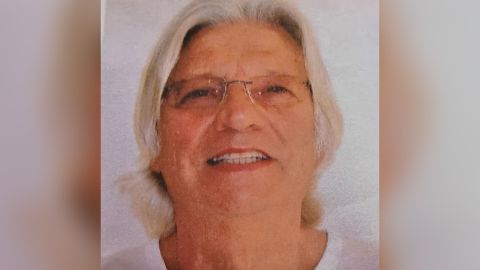
Before they left, Blum encouraged her to bury her jewelry in the garden and to bring personal documents and the title deeds to the house she owned to the UK, she said.
Once in the UK, he suggested they separate so she could spend time with her cousin in Manchester while he did business in France.
But days later, he phoned her, claiming he’d been robbed and beaten by six men with baseball bats, had two broken ribs and was in hospital in Lille, northern France.
He told her he could book her on a flight back to Australia on December 29, 1999, she told the court.
Instead, her cousin booked her an earlier flight, and she arrived home on December 20.
A few hours after she had returned home, Blum turned up, apparently uninjured, and appeared “shocked” when she answered the door, she said.
He told the inquest he had taken the bandages off and rushed home when one of her male relatives had informed him that she was catching an earlier flight. At that stage, Oldenburg said she still trusted him.
But in January 2000, Oldenburg told police she realized documents were missing, and the jewelry buried in the backyard was gone. When she confronted Blum, he said he would send it back, but only some jewelry was returned. She filed a police report and the inquest heard Blum told police he sent all the jewelry back. She never saw him again.
In court, Blum said didn’t take Oldenburg’s documents and had never told her they would move to Europe.
He said he left her in the UK because he didn’t want anything to do with her anymore.
“My life was with my wife and kids in Australia,” he said.
Ginette Gaffney-Bowan told the court that around the same time – the late 1990s – she was lonely and “extremely vulnerable” after divorcing her husband. She placed an advertisement in the newspaper seeking friendship that was answered by Blum, who she knew as Frederick De Hedervary.
Gaffney-Bowan told the court they initially spoke about starting a coin business, but very quickly the conversation turned to his proposal that she sell her house and buy an apartment in Paris.
When she refused, she said he tried to blackmail her with naked photos taken without her consent. She told the inquest that, to her knowledge, he never circulated the images.
Gaffney-Bowan told the inquest that she became “scared,” and in 1998 took out a restraining order against him with police.
When asked what he was seeking from her, Gaffney-Bowan said: “Money. That’s all he’s been after all along.”
She said the only money she gave him was around 30,000 Australian dollars ($20,000) as start-up funding for the coin business.
In court, Blum denied her claims and accused her of lying.
In his final submissions, Casselden told the court the evidence showed Blum displayed a “pattern of behavior in relation to the exploitation of vulnerable single middle-aged women.”
“He has led an extraordinary life of deceit and duplicity, including in relation to his long marriage to his present wife,” Casselden said.
Blum denied he sought to take advantage of Oldenburg and Gaffney-Bowan, but Casselden said his evidence should be “wholly rejected” in favor of their testimony.
“There is simply no motivation, your honor, for either of them to have lied,” Casselden said.
Turning to Barter, Casselden said the only “rational, plausible explanation” for her name change was that she was in a relationship with Blum and that she changed her name “either on her own insistence, or on his, or a combination of both.”
He said it was likely they traveled together as a couple to Europe, and that Blum suggested they start a “new life.” What happened next is unclear.
Casselden said despite an extensive and ongoing investigation, police have been unable to locate Barter – dead or alive. This year NSW Police increased the reward for information leading to the arrest and conviction of anyone involved in her disappearance to 500,000 Australian dollars ($338,000).
The inquest may be concluding, but Leydon says her search for answers will not end there.
“I have a feeling that people think I’m just going to sit back and forget about it. And the reality of that is, I’m not,” Leydon said.
She wants her mother’s disappearance to lead to changes in the laws in Australia to make it easier for family members to access a missing person’s records after a period of no-contact, to give them a better chance than she had to uncover leads and hear the recollections of witnesses before their memories fade.
Leydon accepts that her mother is likely dead, but she still wants to know how, and why.
“I just want to know where she is and what happened,” she said. “I beg people to help me find that answer.”
Note:- (Not all news on the site expresses the point of view of the site, but we transmit this news automatically and translate it through programmatic technology on the site and not from a human editor. The content is auto-generated from a syndicated feed.))
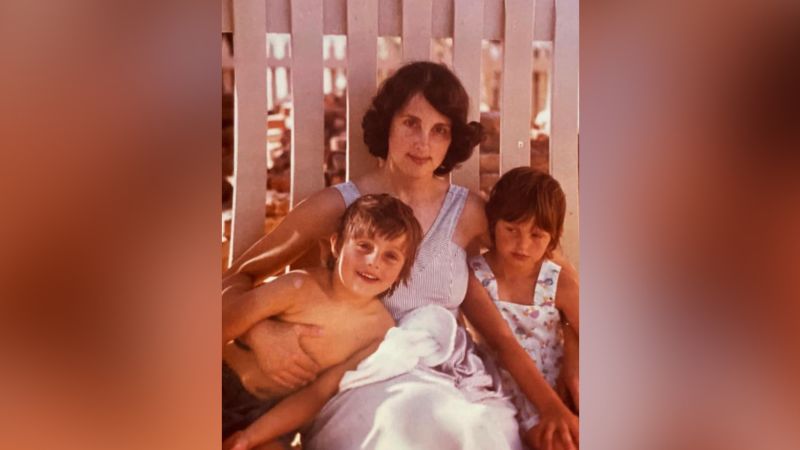



Good post. I learn something new and challenging on blogs I stumbleupon everyday.
It will always be interesting to read through content from other authors and practice
something from their websites.
I have been surfing on-line more than three hours these days, yet I never discovered any interesting article like yours.
It’s lovely price sufficient for me. In my opinion, if all webmasters and
bloggers made just right content material as you did, the
internet will be much more useful than ever before.